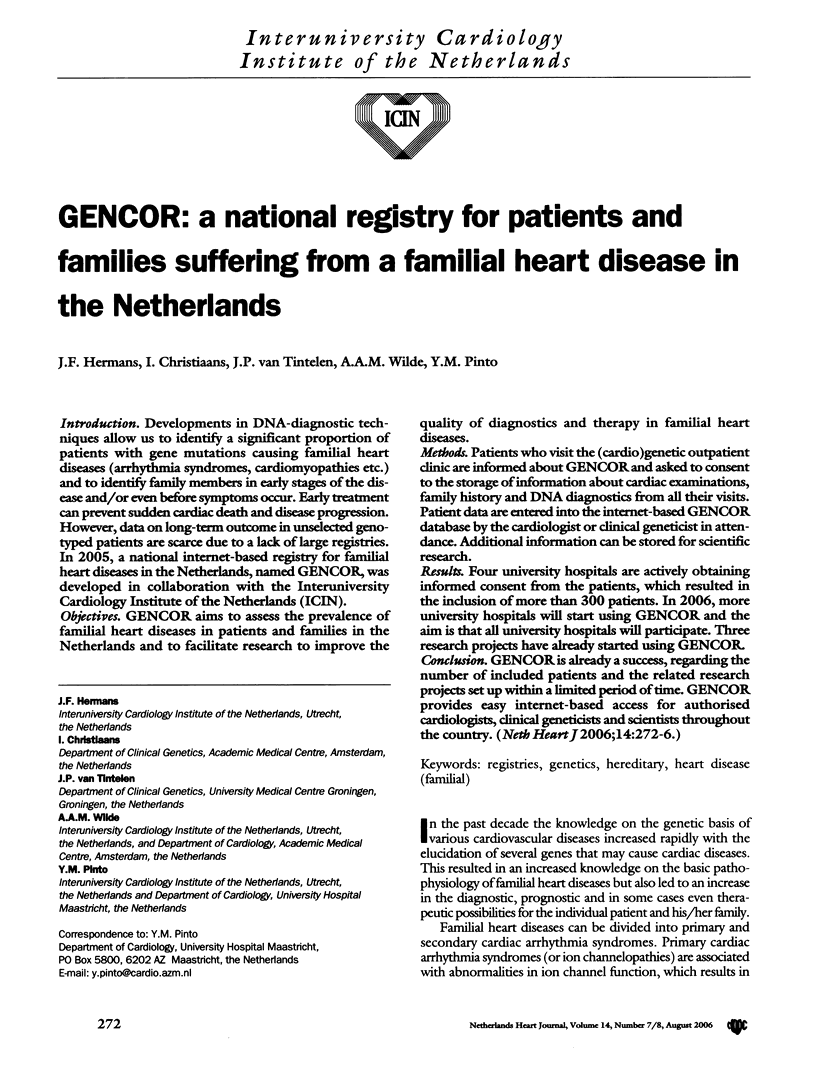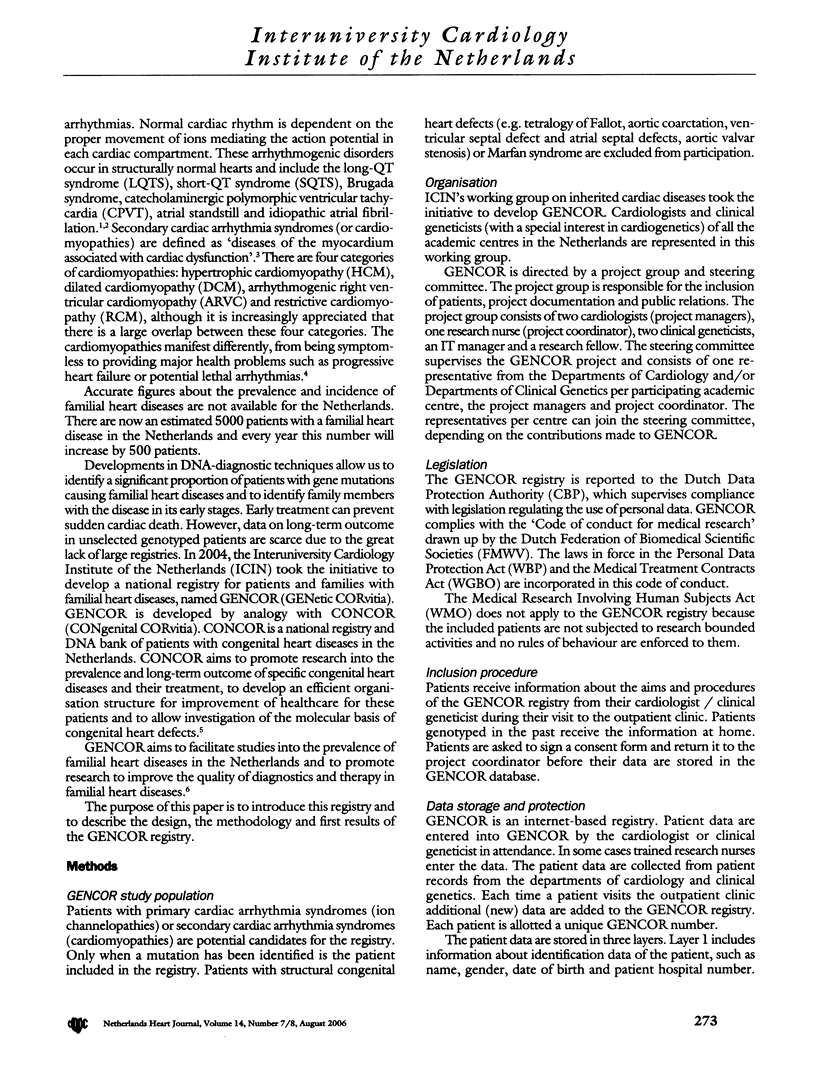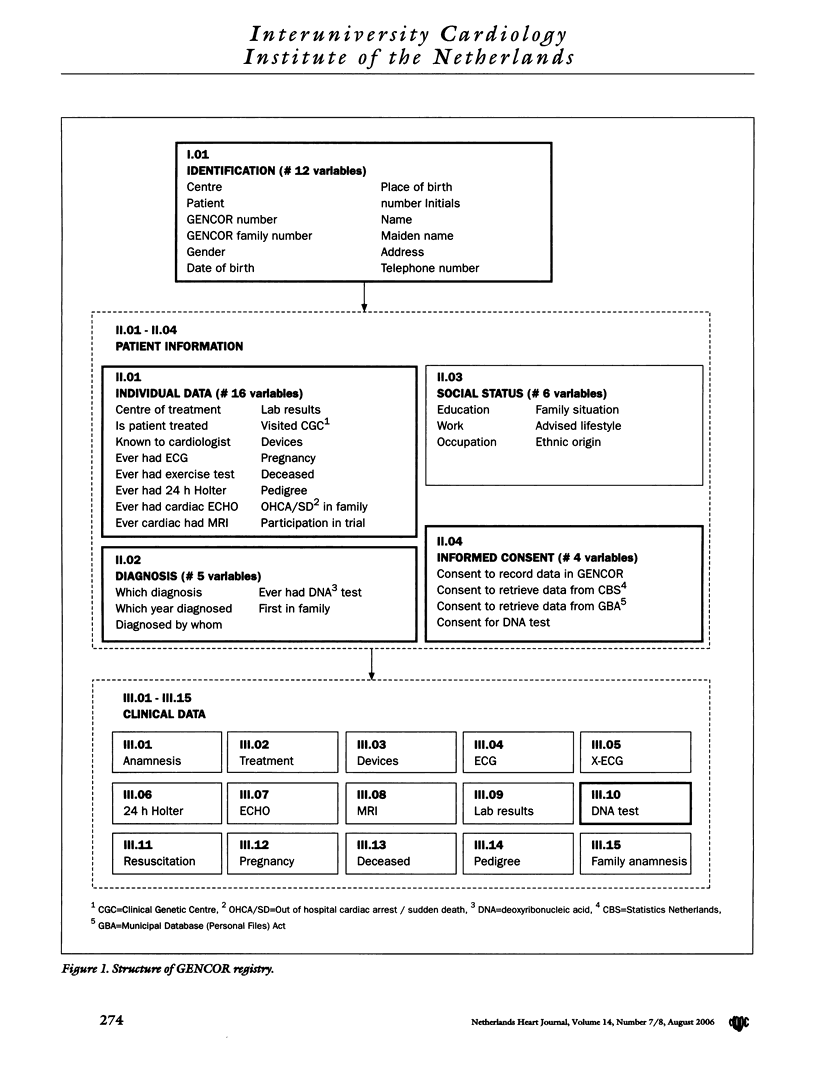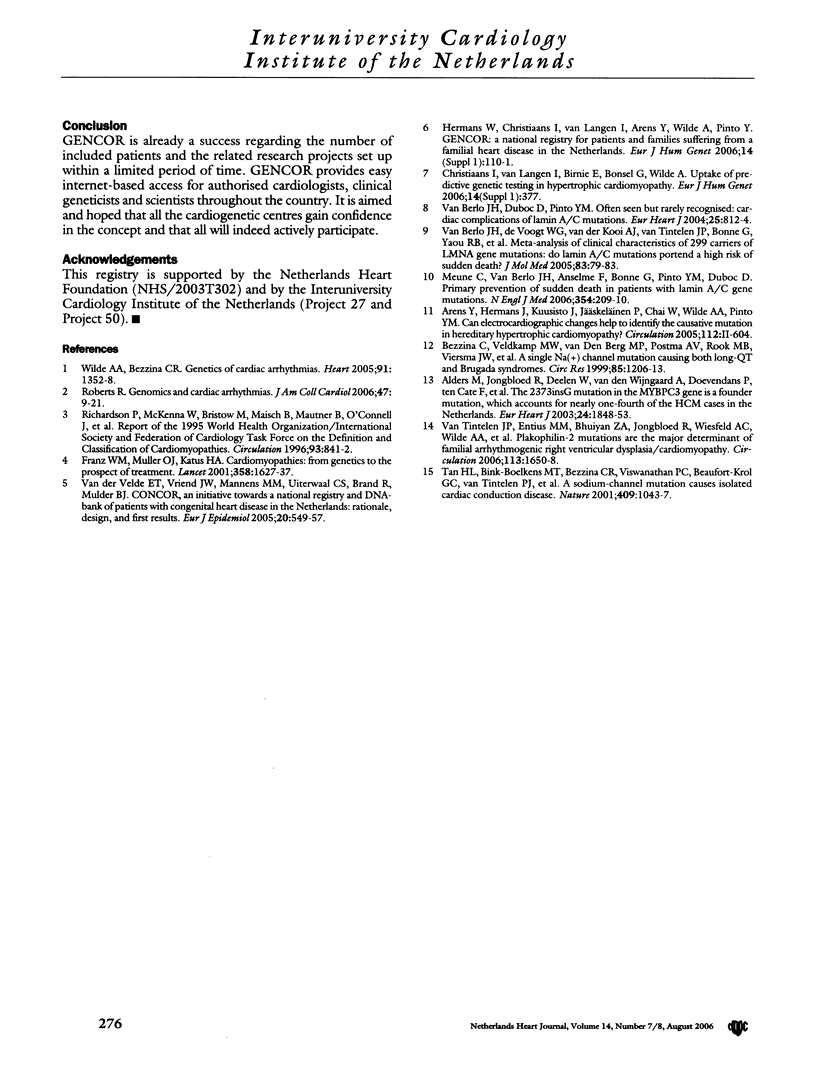Abstract
Introduction
Developments in DNA-diagnostic techniques allow us to identify a significant proportion of patients with gene mutations causing familial heart diseass (arrhythmia syndromes, cardiomyopathies etc.) and to identify family members in early stages of the disease and/or even before symptoms occur. Early treatment can prevent sudden cardiac death and disease progression. However, data on long-term outcome in unselected genotyped patients are scarce due to a lack of large registries. In 2005, a national internet-based registry for familial heart diseases in the Netherlands, named GENCOR, was developed in collaboration with the Interuniversity Cardiology Institute of the Netherlands (ICIN).
Objectives
GENCOR aims to assess the prevalence of familial heart diseases in patients and families in the Netherlands and to facilitate research to improve the quality of diagnostics and therapy in familial heart diseases.
Methods
Patients who visit the (cardio)genetic outpatient clinic are informed about GENCOR and asked to consent to the storage of information about cardiac examinations, family history and DNA diagnostics from all their visits. Patient data are entered into the internet-based GENCOR database by the cardiologist or clinical geneticist in attendance. Additional information can be stored for scientific research.
Results
Four university hospitals are actively obtaining informed consent from the patients, which resulted in the inclusion of more than 300 patients. In 2006, more university hospitals will start using GENCOR and the aim is that all university hospitals will participate. Three research projects have already started using GENCOR.
Conclusion
GENCOR is already a success, regarding the number of included patients and the related research projects set up within a limited period of time. GENCOR provides easy internet-based access for authorised cardiologists, clinical geneticists and scientists throughout the country.
Keywords: registries; genetics, hereditary; heart disease (familial)
Full text
PDF




Selected References
These references are in PubMed. This may not be the complete list of references from this article.
- Alders Marielle, Jongbloed Roselie, Deelen Wout, van den Wijngaard Arthur, Doevendans Pieter, Ten Cate Folkert, Regitz-Zagrosek Vera, Vosberg Hans Peter, van Langen Irene, Wilde Arthur. The 2373insG mutation in the MYBPC3 gene is a founder mutation, which accounts for nearly one-fourth of the HCM cases in the Netherlands. Eur Heart J. 2003 Oct;24(20):1848–1853. doi: 10.1016/s0195-668x(03)00466-4. [DOI] [PubMed] [Google Scholar]
- Bezzina C., Veldkamp M. W., van Den Berg M. P., Postma A. V., Rook M. B., Viersma J. W., van Langen I. M., Tan-Sindhunata G., Bink-Boelkens M. T., van Der Hout A. H. A single Na(+) channel mutation causing both long-QT and Brugada syndromes. Circ Res. 1999 Dec 3;85(12):1206–1213. doi: 10.1161/01.res.85.12.1206. [DOI] [PubMed] [Google Scholar]
- Franz W. M., Müller O. J., Katus H. A. Cardiomyopathies: from genetics to the prospect of treatment. Lancet. 2001 Nov 10;358(9293):1627–1637. doi: 10.1016/S0140-6736(01)06657-0. [DOI] [PubMed] [Google Scholar]
- Richardson P., McKenna W., Bristow M., Maisch B., Mautner B., O'Connell J., Olsen E., Thiene G., Goodwin J., Gyarfas I. Report of the 1995 World Health Organization/International Society and Federation of Cardiology Task Force on the Definition and Classification of cardiomyopathies. Circulation. 1996 Mar 1;93(5):841–842. doi: 10.1161/01.cir.93.5.841. [DOI] [PubMed] [Google Scholar]
- Tan H. L., Bink-Boelkens M. T., Bezzina C. R., Viswanathan P. C., Beaufort-Krol G. C., van Tintelen P. J., van den Berg M. P., Wilde A. A., Balser J. R. A sodium-channel mutation causes isolated cardiac conduction disease. Nature. 2001 Feb 22;409(6823):1043–1047. doi: 10.1038/35059090. [DOI] [PubMed] [Google Scholar]
- Wilde Arthur A. M., Bezzina Connie R. Genetics of cardiac arrhythmias. Heart. 2005 Oct;91(10):1352–1358. doi: 10.1136/hrt.2004.046334. [DOI] [PMC free article] [PubMed] [Google Scholar]
- van Berlo Jop H., de Voogt Willem G., van der Kooi Anneke J., van Tintelen J. Peter, Bonne Gisèle, Yaou Rabah Ben, Duboc Denis, Rossenbacker Tom, Heidbüchel Hein, de Visser Marianne. Meta-analysis of clinical characteristics of 299 carriers of LMNA gene mutations: do lamin A/C mutations portend a high risk of sudden death? J Mol Med (Berl) 2004 Nov 13;83(1):79–83. doi: 10.1007/s00109-004-0589-1. [DOI] [PubMed] [Google Scholar]
- van Tintelen J. Peter, Entius Mark M., Bhuiyan Zahurul A., Jongbloed Roselie, Wiesfeld Ans C. P., Wilde Arthur A. M., van der Smagt Jasper, Boven Ludolf G., Mannens Marcel M. A. M., van Langen Irene M. Plakophilin-2 mutations are the major determinant of familial arrhythmogenic right ventricular dysplasia/cardiomyopathy. Circulation. 2006 Mar 27;113(13):1650–1658. doi: 10.1161/CIRCULATIONAHA.105.609719. [DOI] [PubMed] [Google Scholar]
- van der Velde E. T., Vander Velde E. T., Vriend J. W. J., Mannens M. M. A. M., Uiterwaal C. S. P. M., Brand R., Mulder Barbara J. M. CONCOR, an initiative towards a national registry and DNA-bank of patients with congenital heart disease in the Netherlands: rationale, design, and first results. Eur J Epidemiol. 2005;20(6):549–557. doi: 10.1007/s10654-005-4264-9. [DOI] [PubMed] [Google Scholar]


